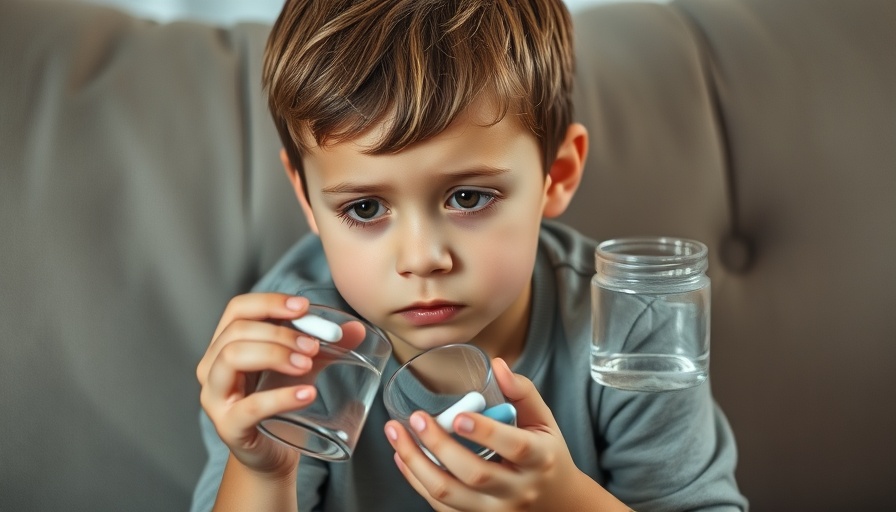
Understanding the Impact of Antibiotics on Child Health
Antibiotics have revolutionized medicine since their inception, treating a myriad of infections that once posed great risks to human life. Yet, a growing body of research highlights a concerning trend: the repeated use of these medications in young children may carry hidden costs not recognized until much later in life. A recent study published in the Journal of Infectious Diseases points to alarming connections between frequent antibiotic exposure and the emergence of chronic health conditions in children.
The Study: Findings and Implications
In this extensive study involving health records from over a million infants in the UK, researchers tracked long-term pediatric conditions developed up to the age of 12. The findings revealed that children receiving multiple courses of antibiotics experienced a significant disruption in their gut microbiome, leading to potential allergic conditions like asthma, food allergies, and hay fever. Intriguingly, the data suggests an increased risk for intellectual disabilities as well, although the researchers advise that further investigation is warranted to clarify this link.
Why Gut Health Matters
The state of gut health plays a critical role in various bodily functions and overall well-being. The gut microbiome, a complex community of microbes living in our intestines, helps regulate not only digestion but also influences immune function and cognitive health. By disrupting this balance, antibiotics could trigger allergic reactions and developmental challenges, making the question of their judicious use in pediatric care all the more urgent.
Dispelling Myths Around Antibiotic Use
Contrary to common beliefs, not all pediatric conditions are tied to antibiotic consumption. The study found no significant links to autoimmune diseases like celiac and inflammatory bowel diseases, nor did it correlate antibiotic use with neurodevelopmental disorders such as ADHD or autism. This nuance underscores the importance of a tailored approach in treating infections in children, rather than defaulting to antibiotics for every ailment.
How to Balance Antibiotic Use in Kids
As a concerned parent or caregiver, it’s essential to navigate the delicate balance between effectively treating infections and avoiding unnecessary antibiotic prescriptions. Consult with your child's healthcare provider about symptoms and treatment options. Only use antibiotics when absolutely necessary, as not every illness warrants such treatment. Alternatives such as enhanced nutrition and mindfulness practices can bolster a child's immune system and promote better health overall.
Ensuring a Healthy Lifestyle for Children
A focus on healthy living is more crucial than ever. Incorporating nutritious, whole foods can help build a resilient immune system and support gut health. Foods rich in probiotics, such as yogurt and fermented vegetables, can replenish beneficial gut bacteria while minimizing the need for antibiotics during minor infections. Moreover, engaging children in physical activity fosters both mental and physical well-being, creating a robust foundation for their health.
Future Directions: What Lies Ahead
As research in this area evolves, it will be vital for parents to remain informed about the risks associated with antibiotic overuse in children. Understanding the long-term implications of frequent antibiotic prescriptions may empower families to take a more proactive approach in supporting their children's health.
Concluding Thoughts
The journey towards understanding the impact of antibiotics on children's health is just beginning. By staying informed and advocating for thoughtful treatment decisions, parents can play a pivotal role in safeguarding their children's well-being. Always consult with a healthcare professional when assessing the need for antibiotics, ensuring that each decision prioritizes the child's long-term health.
 Add Row
Add Row  Add
Add 




Write A Comment